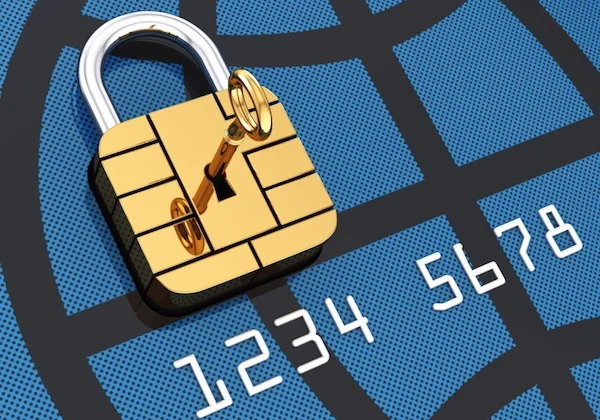In today’s digital age, it’s essential to stay up-to-date with the latest trends in fraud and security concerning cards. Once considered simple plastic payment methods, these have evolved into sophisticated tools, heavily targeted by malicious actors. This blog post dives into the recent developments and measures being taken to ensure the safety of cardholders in the United States.
Anúncios
We will cover the newest tactics used by fraudsters, innovative security technologies, regulatory changes, and the importance of consumer vigilance. By understanding these evolving dynamics, both businesses and consumers can better protect themselves from financial harm and unauthorized access.
Emerging tactics in card fraud

Fraudsters consistently develop new methods to exploit vulnerabilities in payment systems. One prominent method is card-not-present fraud, where criminals use stolen information to make online purchases. Since these transactions don’t require a physical card, it’s challenging to verify the legitimacy of the buyer.
Anúncios
Another tactic gaining traction is synthetic identity theft. In this scenario, fraudsters combine real and fake information to create new, fraudulent identities. These can then be used to open new credit accounts, resulting in significant financial loss for both consumers and financial institutions.
The rise of card-not-present fraud
With the explosion of online commerce, card-not-present fraud has escalated. Criminals gain access to sensitive information through data breaches or by purchasing it on the dark web. Since these transactions don’t require physical verification, they’re a convenient target for fraudsters. As online shopping increases, so does the volume of card-not-present fraud attempts.
Security experts recommend that consumers use secure websites and update their passwords regularly to mitigate risks. Multifactor authentication (MFA) is another effective deterrent. Despite these measures, the problem persists, requiring continuous advancements in verification technology.
Synthetic identity theft
Synthetic identity theft involves creating new identities by combining real information (such as Social Security numbers) with fabricated details. This method enables fraudsters to establish credit lines and make unauthorized purchases. It often goes undetected for longer periods because the fake identities don’t correspond to real individuals.
This form of fraud can result in substantial financial damage to lenders and survivors of identity theft. Financial institutions are now employing advanced machine learning algorithms to detect anomalies that might indicate synthetic identity creation.
Innovative security technologies
To combat these emerging fraud techniques, the financial industry is deploying cutting-edge security technologies. One such advancement is the use of EMV (Europay, MasterCard, and Visa) chips. These chips provide enhanced security features, making it more difficult for fraudsters to clone cards and conduct unauthorized transactions.
Tokenization of card information is another significant development. This process replaces sensitive card details with a unique identifier or ‘token’ during transactions. The token is meaningless if intercepted, ensuring the data’s security even if a breach occurs.
Tokenization
Tokenization is rapidly gaining recognition as a potent security measure. By substituting sensitive card information with a unique token, this technology minimizes the risk of data breaches. Even if a token is intercepted during a transaction, it cannot be used anywhere else, rendering it useless to fraudsters.
Tokenization is particularly beneficial for recurring online payments and mobile transactions. Many leading payment platforms, including Apple Pay and Google Wallet, have adopted this technology to safeguard user information.
Regulatory changes and their impact
The fight against card fraud and security breaches isn’t limited to technological advancements; regulatory changes also play a crucial role. In the U.S., various legislative measures and guidelines have been introduced to enhance card security.
The introduction of the Payment Card Industry Data Security Standard (PCI DSS) has been particularly impactful. This set of guidelines helps ensure that all companies that process, store, or transmit credit card information maintain a secure environment.
PCI DSS compliance
The Payment Card Industry Data Security Standard (PCI DSS) is a comprehensive set of requirements designed to ensure secure handling of credit card information. Compliance with PCI DSS is crucial for businesses that process card transactions. The standard includes measures such as encrypting transmission of cardholder data and maintaining secure systems and applications.
Despite the rigorous requirements, compliance with PCI DSS significantly reduces the likelihood of data breaches. Businesses found non-compliant can face severe penalties, further emphasizing the standard’s importance.
Federal regulatory updates
Federal agencies are consistently updating regulations to keep pace with new fraud tactics. For instance, the Federal Trade Commission (FTC) regularly revises guidelines to improve consumer protection. Likewise, the Office of the Comptroller of the Currency (OCC) implements rules that financial institutions must follow, ensuring their systems are secure.
These updates are crucial for mitigating risks associated with evolving fraud techniques. They ensure that businesses and financial entities adopt the latest security practices and technologies. Non-compliance can lead to significant legal repercussions and financial loss.
By understanding the latest trends in card fraud and security, businesses and consumers can better protect themselves from potential threats. The evolving tactics of fraudsters, combined with advancements in security technology and regulatory changes, underscore the importance of vigilance and proactive measures.

